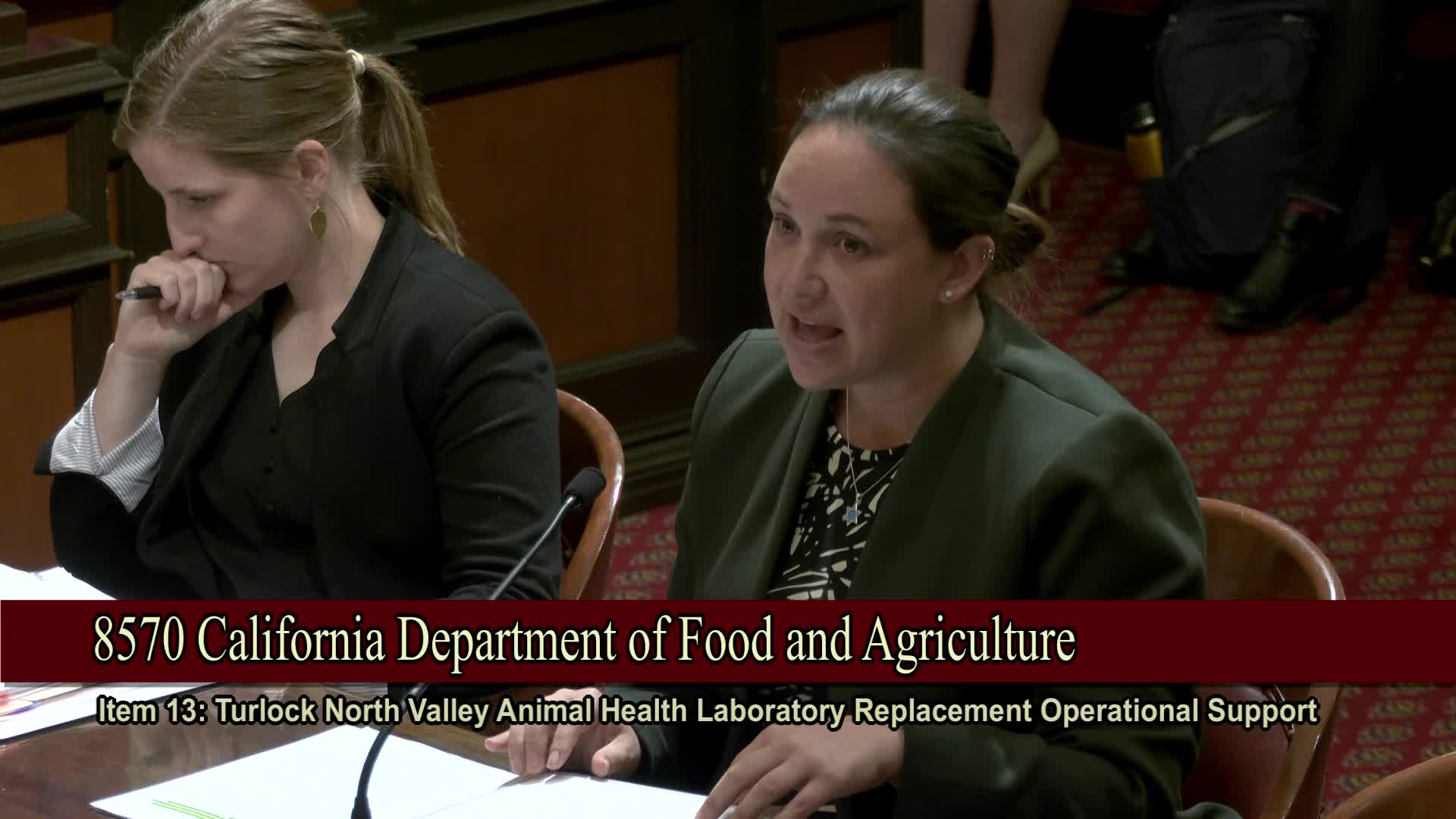California expands animal health lab to enhance testing capacity amid bird flu outbreak
May 01, 2025 | California State Senate, Senate, Legislative, California
This article was created by AI summarizing key points discussed. AI makes mistakes, so for full details and context, please refer to the video of the full meeting. Please report any errors so we can fix them. Report an error »

In a recent meeting of the Senate Budget and Fiscal Review Subcommittee No. 4 on State Administration and General Government, significant discussions centered around the operational costs and implications of a new laboratory facility dedicated to animal health in California. The proposed facility, which will span 41,000 square feet, represents a substantial upgrade from the current 5,100 square foot facility, enhancing the state's capacity to address animal health issues, particularly in light of recent challenges such as bird flu outbreaks affecting the dairy industry.
The new laboratory is designed to include advanced biological containment systems and improved heating, ventilation, and air conditioning, which are crucial for conducting animal necropsies. This capability is particularly vital for the state's largest dairy-producing region, where timely testing and results are essential for managing animal health and preventing disease spread. Currently, the existing facility is limited to avian services, necessitating the transfer of samples to other locations, such as the Tulare facility, which has faced operational disruptions due to flooding.
During the meeting, subcommittee members expressed enthusiasm about the new facility's potential to expand testing capabilities beyond birds, allowing for a million additional services. However, questions arose regarding the operational costs associated with the current facility and the rationale behind funding the new laboratory entirely through the general fund, rather than utilizing special funds. This aspect of the discussion highlighted the complexities of funding mechanisms within the Department of Food and Agriculture, as the facility's primary focus is on supporting the agricultural industry rather than broader public health initiatives.
The subcommittee's deliberations underscored the importance of the new laboratory in enhancing California's animal health infrastructure, particularly as the state navigates ongoing agricultural challenges. As the project moves forward, stakeholders will be keenly watching how funding decisions will impact the facility's operational capabilities and its role in safeguarding the state's agricultural economy.
The new laboratory is designed to include advanced biological containment systems and improved heating, ventilation, and air conditioning, which are crucial for conducting animal necropsies. This capability is particularly vital for the state's largest dairy-producing region, where timely testing and results are essential for managing animal health and preventing disease spread. Currently, the existing facility is limited to avian services, necessitating the transfer of samples to other locations, such as the Tulare facility, which has faced operational disruptions due to flooding.
During the meeting, subcommittee members expressed enthusiasm about the new facility's potential to expand testing capabilities beyond birds, allowing for a million additional services. However, questions arose regarding the operational costs associated with the current facility and the rationale behind funding the new laboratory entirely through the general fund, rather than utilizing special funds. This aspect of the discussion highlighted the complexities of funding mechanisms within the Department of Food and Agriculture, as the facility's primary focus is on supporting the agricultural industry rather than broader public health initiatives.
The subcommittee's deliberations underscored the importance of the new laboratory in enhancing California's animal health infrastructure, particularly as the state navigates ongoing agricultural challenges. As the project moves forward, stakeholders will be keenly watching how funding decisions will impact the facility's operational capabilities and its role in safeguarding the state's agricultural economy.
View full meeting
This article is based on a recent meeting—watch the full video and explore the complete transcript for deeper insights into the discussion.
View full meeting
